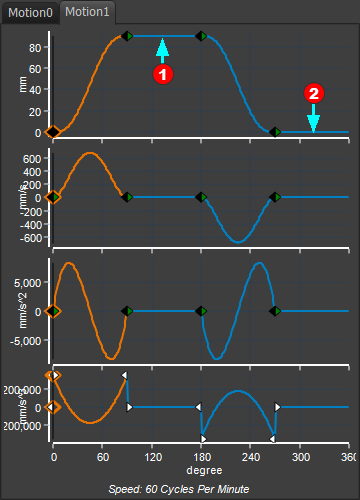Use a Dwell when you want a tool to be stationary.
However, Dwell segments are used too frequently. Why?
The other segments become shorter in duration, and their peak accelerations also increase. Shorter segment are more likely to induce vibration in the mechanism. The Peak Torque of the drive-shaft also increases, and reverses from a positive to a negative torque more rapidly. This can lead to wind-up and over-run of the drive-shaft.
Top-Tip
Try not to use a Dwell segment unless you need a tool to be absolutely stationary for at least 20° range of the X-axis.
If the dwell is less than 20°, then. as an alternative, try to delete the Dwell segment. Then, use segments that are before and after the 'dwell' that have zero jerk-values at the Blend-Point that replaces the Dwell segment.
|

